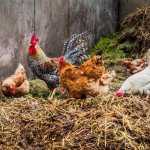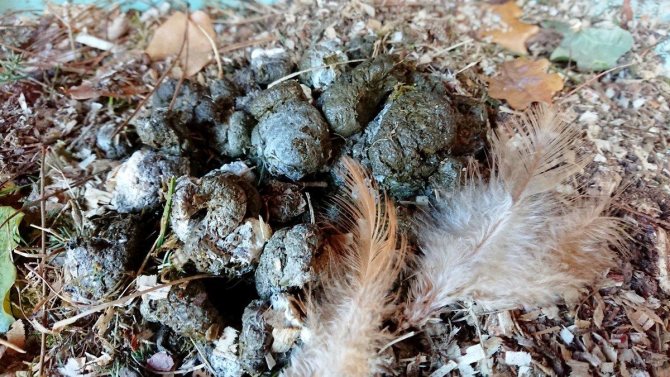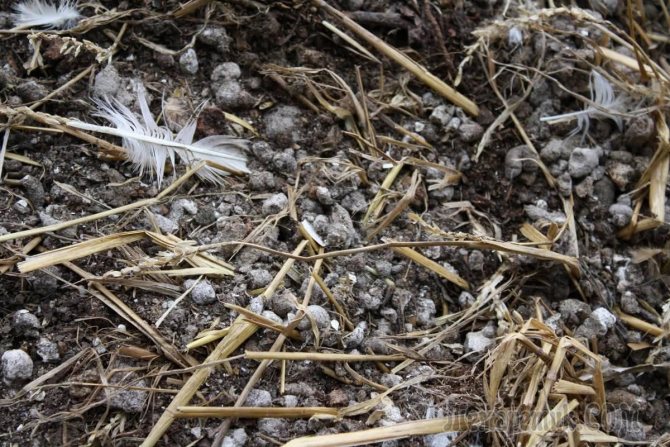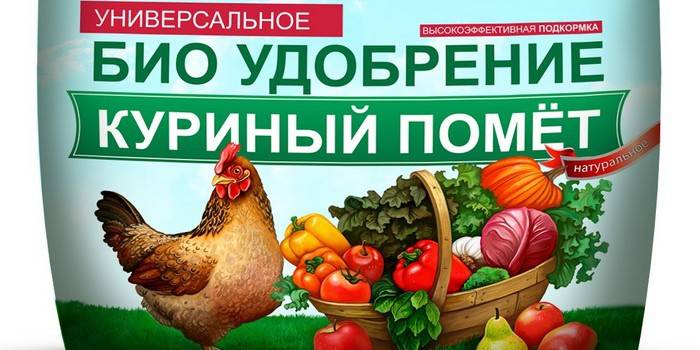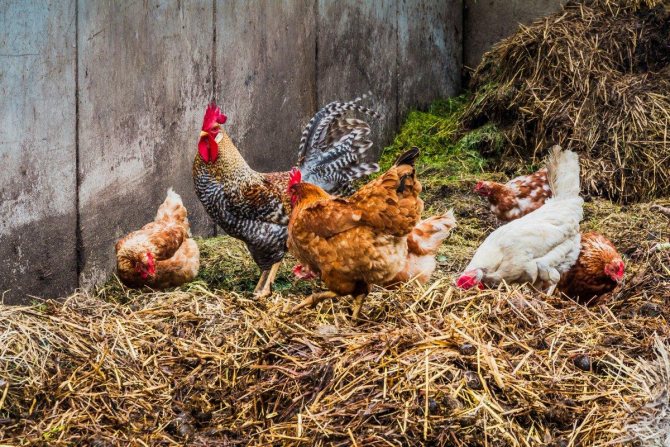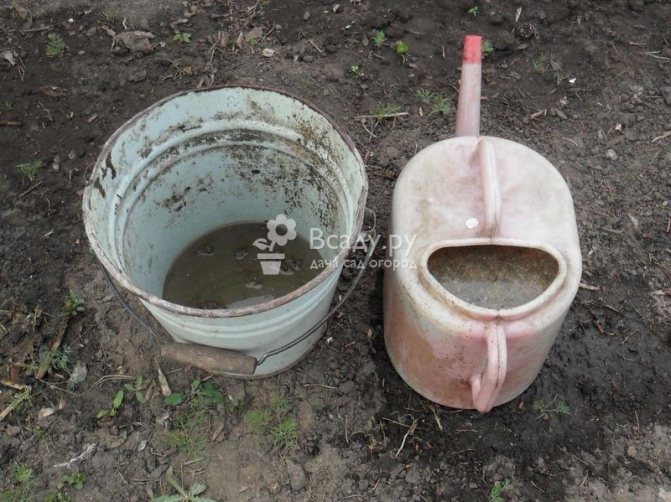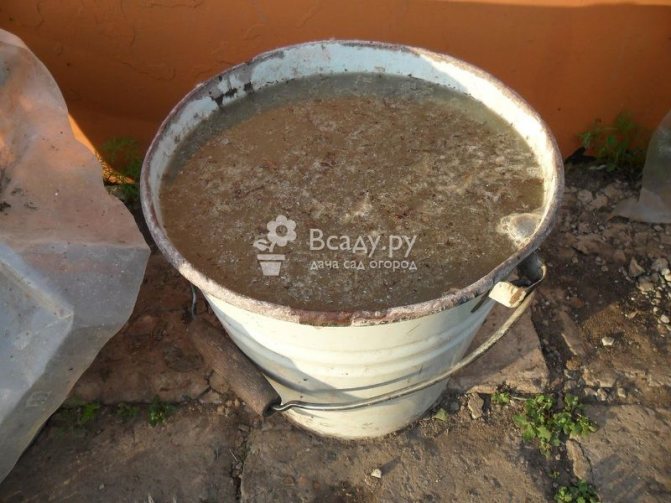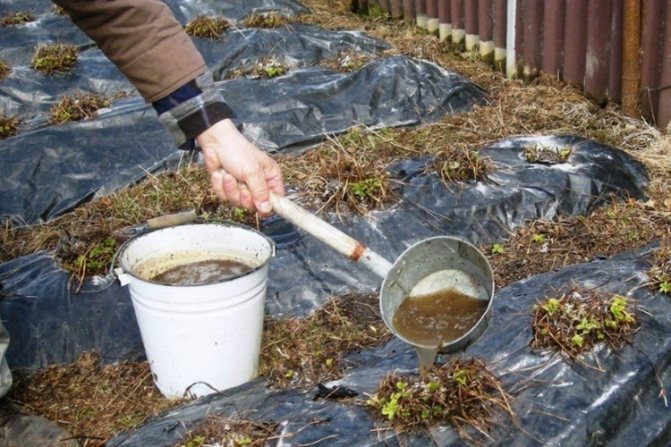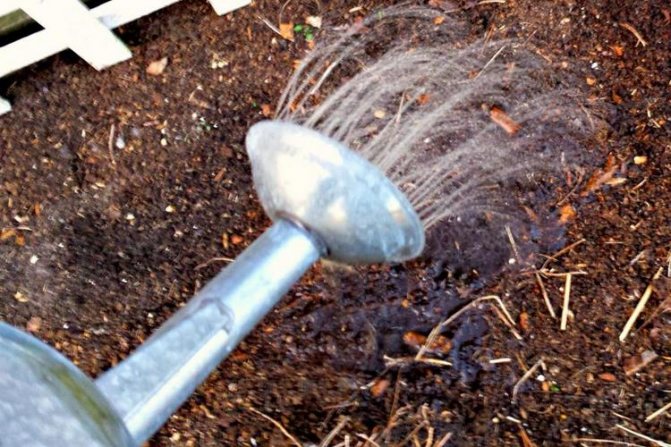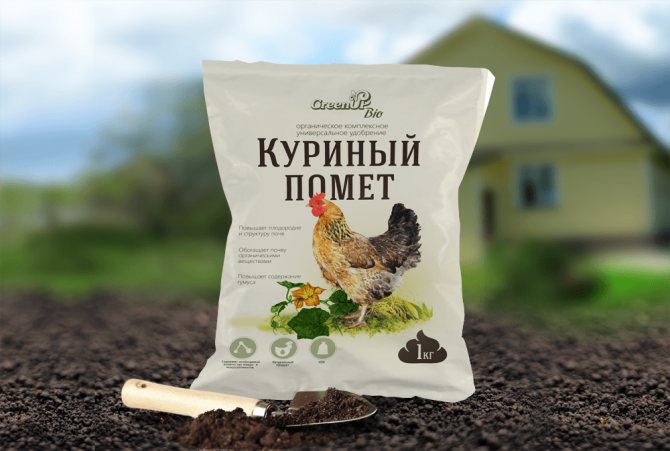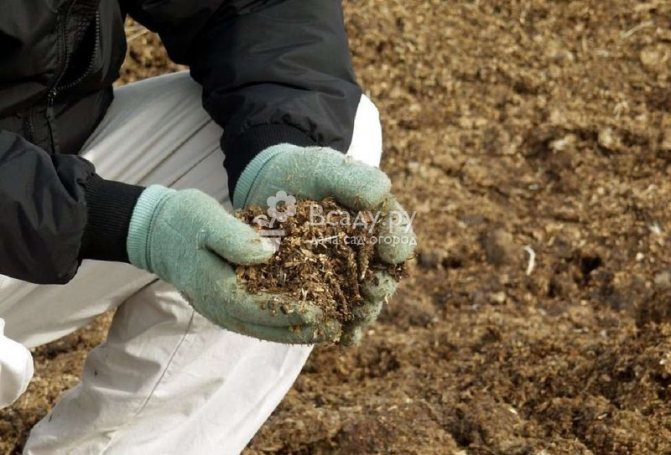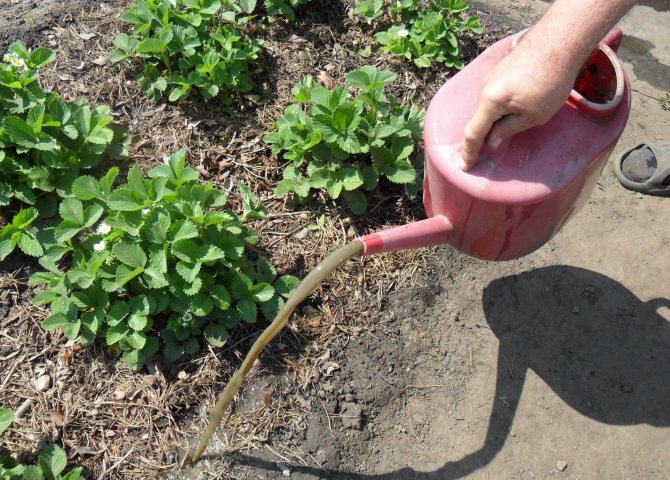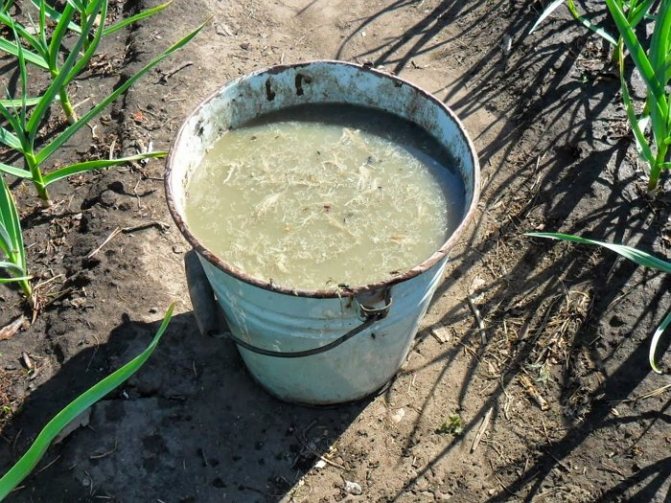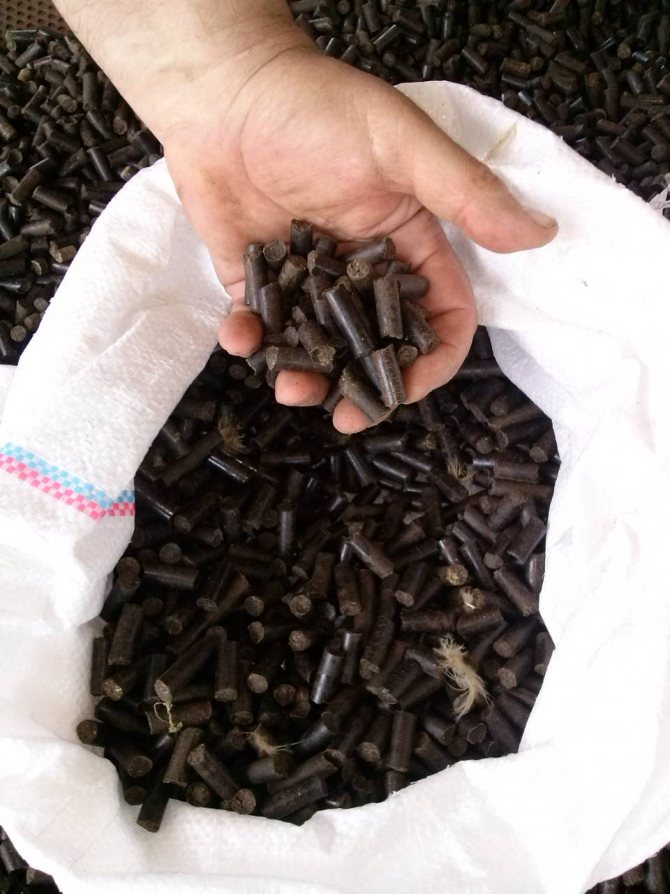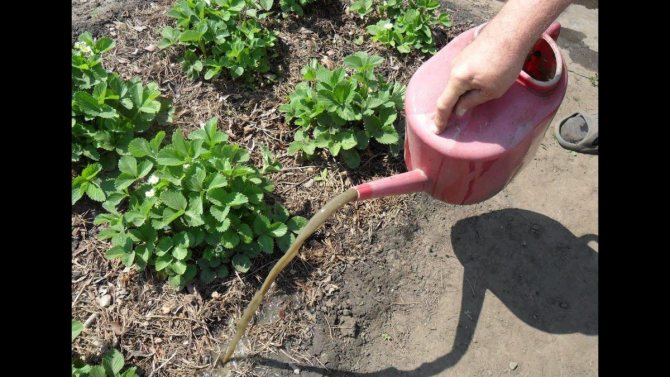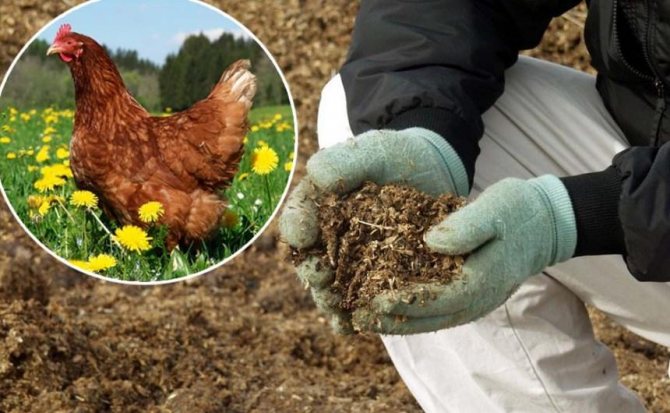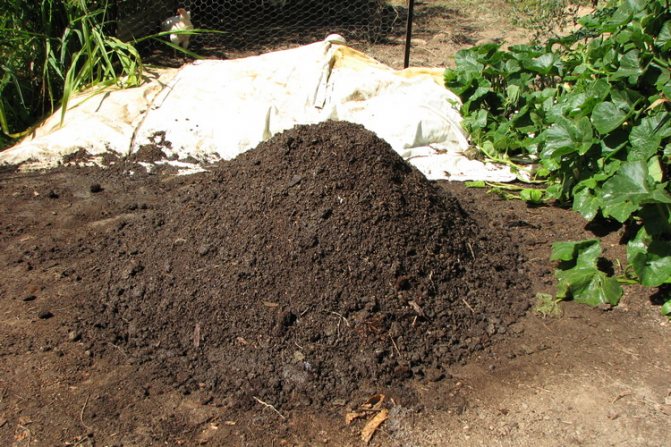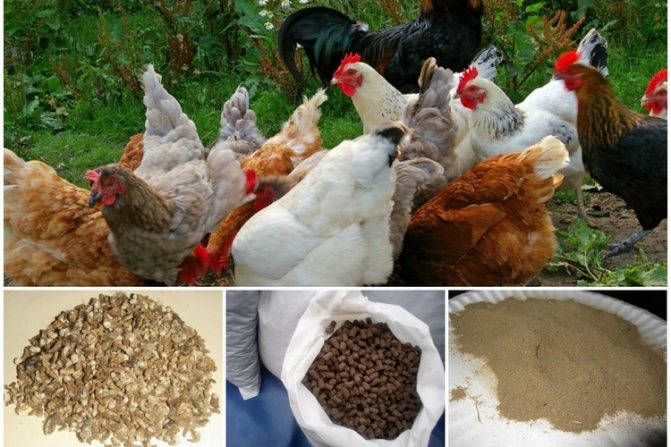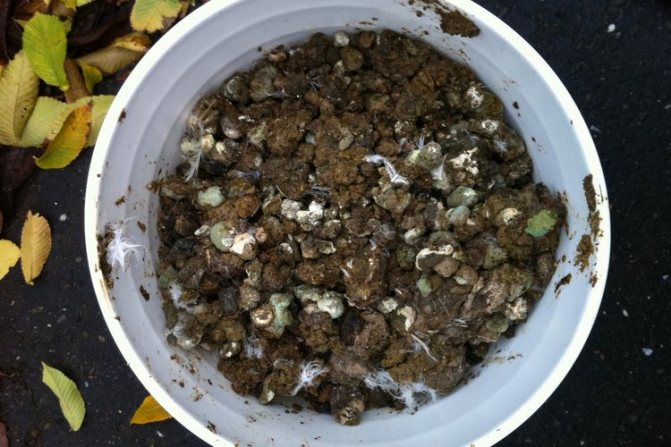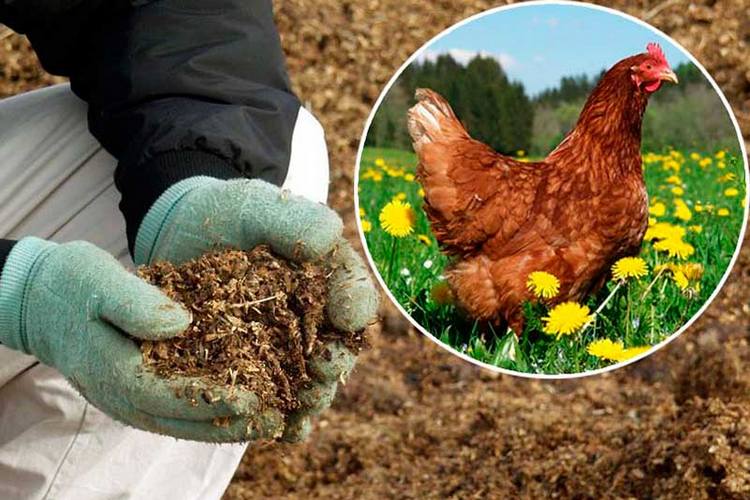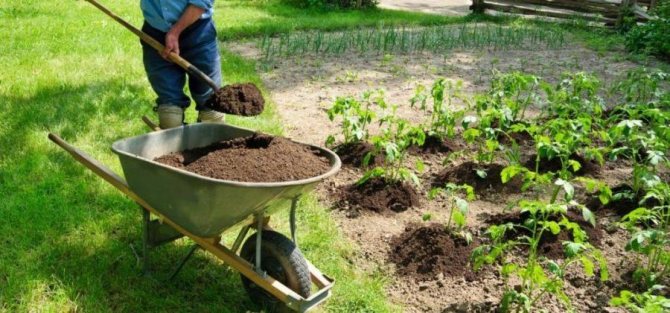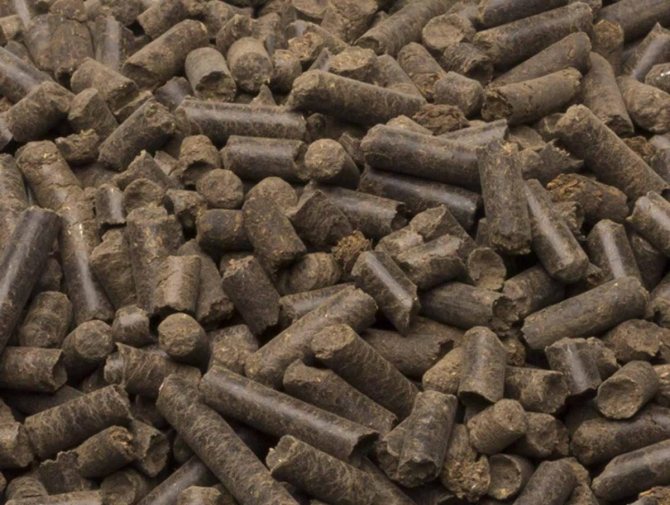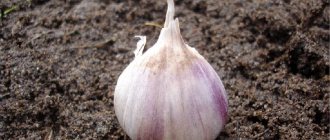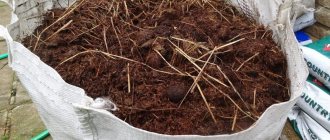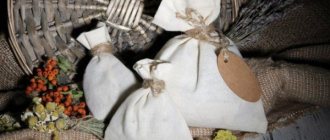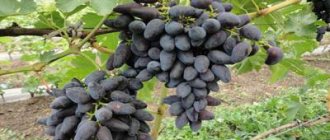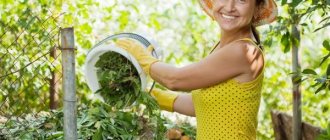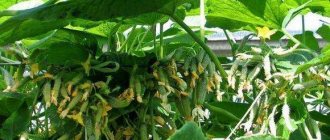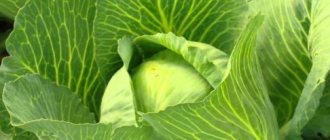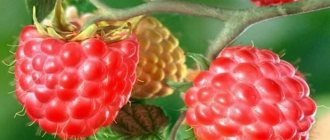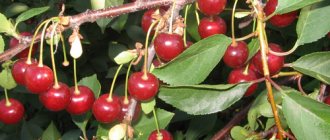In rural areas, gardeners envy those who keep chickens - chicken manure is used as an excellent nitrogen-containing fertilizer, thanks to which plants quickly gain green mass. This tool is used for growing vegetables, fruits, in ornamental gardening, it is also suitable for various greens.
We will tell you why chicken manure works this way and how to store it correctly. We will give information on the methods of application and application to the beds, we will show you how you can improve the yield of crops with the help of poultry droppings.
What it is
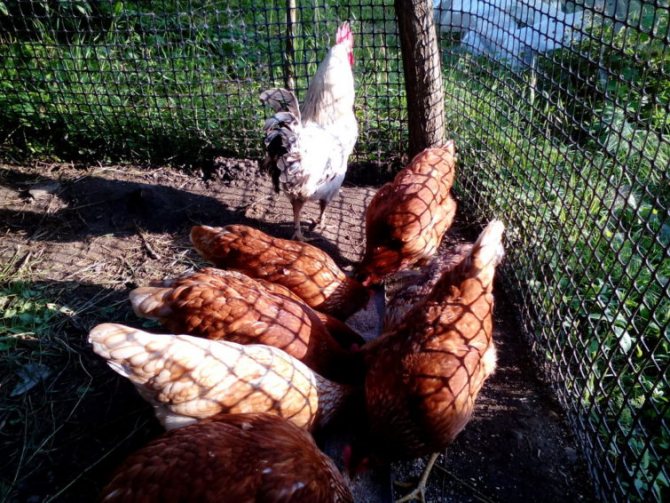
Chicken droppings, or poultry waste (chickens, roosters), is a universal fertilizer suitable for almost all garden plants and crops.
The peculiarities of the composition of chicken manure make it possible to use it in various forms: in dry or liquid form, in pure form (only droppings) or in combination with husks, peat, etc., as well as in the form of compost.
The chemical composition of chicken manure is very rich:
- microelements: potassium, magnesium, manganese, zinc, cobalt, sulfur, etc .;
- organic acids, sulfides, phenols and phosphoric compounds.
In addition, chicken manure does not emit phosphates in the soil and also contains a large amount of nitrogen.
Due to this high-quality composition, chicken manure fertilizer has many useful properties:
- fresh litter practically does not have a strong unpleasant odor, which is due to the absence of ammonia compounds;
- feeding with chicken droppings can rarely be done; one fertilization is enough to saturate the soil for a couple of years;
- suitable for any type of soil, significantly improving its quality;
- normalizes soil acidity, restores microflora, fights weeds;
- does not burn or damage the root system.
In comparison with other natural organic fertilizers, chicken manure is the leader in its chemical composition, assimilation and preservation of nutrients in the soil.
Collection and storage of droppings
The waste products of birds are collected in pure form or together with hay or straw during the cleaning of the premises in which the chickens are kept. It is advisable to dry the raw material before use. You can temporarily store small amounts of excrement in buckets, bags, or barrels. For long-term storage, it is worth making a roomy drawer.
Where to "settle" the compost heap
Considering the unpleasant odor and the ability of the fertilizer to emit methane and ammonia, the location should be away from home and other frequently visited buildings.
What plants can be fertilized
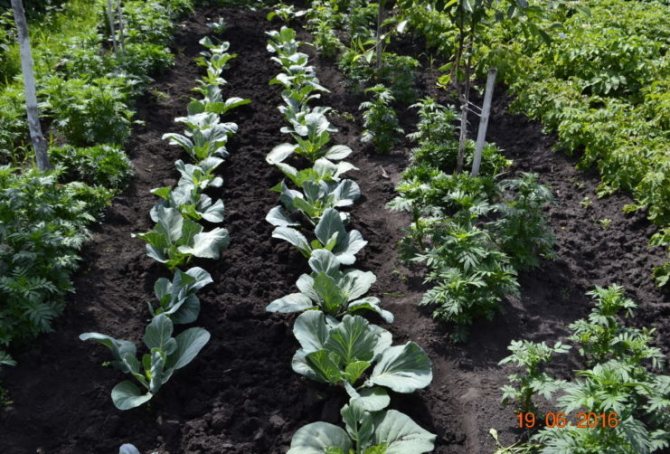

Chicken manure is ideal for fertilizing many garden and vegetable crops: potatoes, tomatoes, eggplants, onions, garlic, strawberries, fruit trees, flowers, etc.
- onions, garlic and other herbs can be fed several times throughout almost the entire season, with the exception of the period of active growth of these plants, with litter (3.5 kg / m²) or non-litter (2 kg / m²) manure;
- white cabbage can be fed with both litter (3 kg / m²) and non-litter (3 kg / m²) chicken manure; after the main feeding, then 2-3 additional ones can be carried out, 1 liter per plant;
- pumpkin and tomatoes They are fed in early spring with litter (6 kg / m²) or non-litter (4 kg / m²) manure.Further fertilizing is carried out at the rate of 5 l / m²;
- strawberry fertilized in the spring, 4 months before planting - this will protect the root system from the negative effects of methane and ammonia. It is recommended to feed strawberries with chicken droppings for 3-4 years in a row;
- roots fertilized in the fall: litter (3 kg / m²) or non-litter (2 kg / m²) manure. During the growing season, you can make a liquid top dressing at the rate of 4 l / m²;
- potatoes it is fed only in autumn and only with bedding manure - 4 kg / m²; during the growth of the culture, chicken manure cannot be used.
During the garden season, it is worthwhile to use chicken manure carefully - its excessive amount leads to the accumulation of nitrates in the leaves.
Top dressing is not allowed chicken droppings of azalea, camellia, heather and blueberry; these plants do not tolerate high levels of sodium salts in their droppings.
Application in practice
Today, the following traditional ways of using chicken manure are known:
- in its pure form;
- mixed with peat, husk, chaff, slag, etc.
- in the form of compost;
- water infusion as additional feeding during watering.
Dry droppings
Dry chicken manure is in demand because it is easy to store and then apply. It is best to apply this top dressing in this form in the fall, after harvesting. Over the winter, processing will take place in moist soil and all elements will be completely absorbed into the soil. During the main processing, it must be brought in at the rate of 400-700 grams per cubic meter. For seedlings, fill in crushed form in a hole of 20-30 grams, for berry plants - 200-400 grams per 1 meter of soil.
Infusion
Dung infusion is an ideal fertilizer for vegetables that we collect several times during the season. That is, it is good to feed him cucumbers, peppers, tomatoes, eggplants, zucchini and more. First, the infusion must be specially prepared, fermented in a barrel, and then, if necessary, diluted in water. Cooking is very simple and quick. It is necessary to apply not under the plants, but between the rows.
To do this, you can take dry chicken manure at the rate of 500 grams per 10 liters of water and insist in a barrel for about 3-5 days. If you are confused by a strong smell, you can cover the container with thick plastic wrap or a lid. After obtaining a dark-colored solution, it must be further diluted in water in a ratio of 1/10. To prepare such an infusion, you can also use fresh droppings. If a concentrated nitrogen fertilization is needed as a fertilizer, then you can not insist on the mixture from the poultry house, but immediately water the plant with the solution.
Compost
This fertilizer preparation method is most suitable for gardeners who do not keep poultry constantly and have a small supply of droppings. For composting, in addition to manure, you will need sawdust or straw, peat. You need to bring it in only in the fall. In spring, they are allowed only on sandy soils.
- Dig and specially prepare a compost pit. You can also use any suitable container for this, for example, a wooden box.
- Lay peat on the bottom followed by a layer of sawdust.
- Now we lay the chicken manure in layers, mixing with straw or sawdust.
- You can run a bunch of worms for better processing, or you can just wait 1-2 months. The fertilizer is sprayed, fermented and prepared naturally.
How to use chicken droppings correctly
Despite the naturalness and usefulness of chicken manure, it must be used correctly as a top dressing. For example:
- It is not advisable to add fresh chicken manure to undersized crops; this fertilization method is suitable for shrubs and trees.
- Berries, greens, tomatoes and peppers are fertilized 3-4 months before planting by applying fertilizer to the dug soil - this method avoids contamination of plants with pathogenic microorganisms contained in the droppings.
- When fertilizing garden crops, only real and diluted manure is used.
- Potassium chloride can be used to fertilize potatoes along with chicken droppings.
- Young plants are rarely fed with droppings, once every 2-3 years - an excess of fertilizer can lead to the accumulation of uric acid, which significantly slows down the growth of the plant.
- Compost (processed manure with peat, ash or straw) is applied in autumn, and in sandy soil in spring. To prepare compost, a wooden box or a shallow pit is used, on the bottom of which peat is laid out in layers, then straw or sawdust, then droppings mixed with sawdust / straw. The compost is prepared for about 1-1.5 months.
- Digging up the ground with fresh droppings is not recommended; such digging is permissible before the spring planting of seedlings. In this case, the manure is applied evenly at the rate of 1 kg / m².
- Top dressing with liquid fertilizer is recommended to be applied on wet soil or after rain.
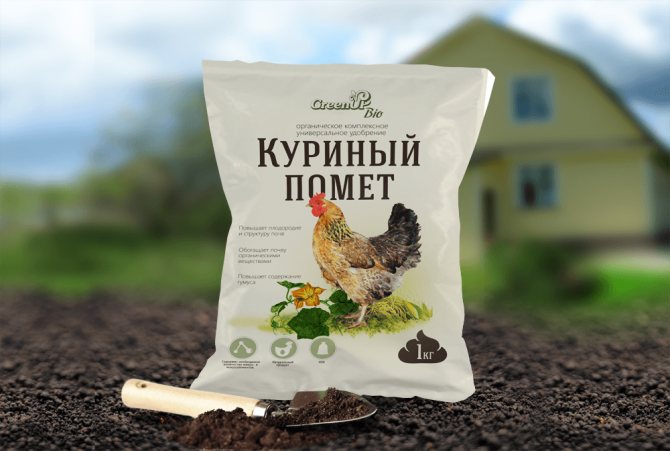

Poultry manure in granules is now available in stores - a processed and free from pest eggs and weed seeds fertilizer, odorless and easy to use. Such droppings are applied in early spring, at 100 g / m², under shrubs and trees at 250-300 g / m²: at the same time, you should avoid getting granules on the plants themselves.
To prepare a solution from granulated droppings, proportions of 1 part of granules and 50 parts of water are taken for young plants, or 1 to 100 for adult crops.
How and when to fertilize


Application rates for chicken manure as fertilizer
The options for using the litter are not diverse, but there are some nuances, and you need to know them. Chicken manure is a very concentrated and potent agent, the misuse of which can be very harmful. Here are some basic rules that apply to all application options:
- The soil is fertilized with droppings only when the sun is absent in the firmament. It can be cloudy weather, when the sun is overcast, in the evening after sunset or in the morning before sunrise.
- If fertilizer based on manure is applied to the garden, then it must be well moistened before that.
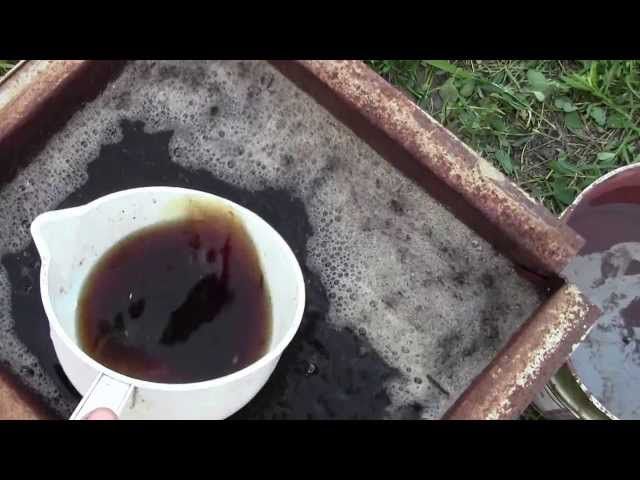

Convenient to irrigate with a measuring bucket
- The ingress of dry substrates based on droppings on the roots is unacceptable.
- After watering with manure tincture, it must be washed off from the leaves and fruits of plants.
The maximum number of applications per season ranges from 1 to 4 times. It is impossible to fertilize plants with droppings and fertilizers based on it more often. In addition, application rates differ in fall and spring.
Autumn introduction
On an area with heavy soil, it is useful to add rotted chicken manure in the fall, when the crop has already been harvested. After application, the beds are dug up for the winter, this allows the fertilizer to be evenly distributed over the soil. During the winter, soil bacteria decompose droppings into components, as a result of this activity, useful trace elements go into the soil layer, from where they will feed on cultivated plants next year. Nitrogen is partially decomposed into components, which removes its excess.
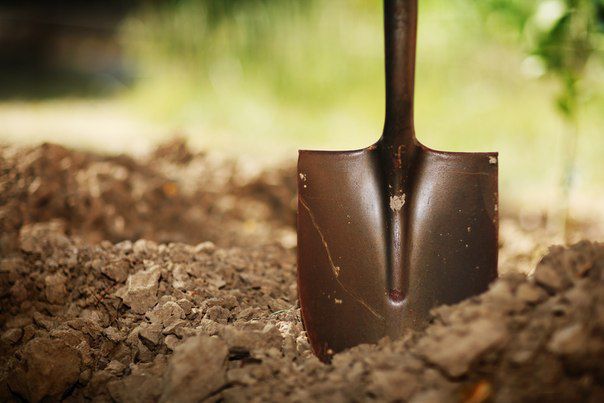

Fertilizing the soil after harvest
The recipe is simple. Rotted semi-dry droppings are taken at the rate of 1 kg per 1 hundred square meters of land. If it is dry, less by weight is taken, if it is damp, more. If you are going to add more sand, ash or humus to the bed for certain crops that you plan to plant on this bed in the spring, you can simply mix it all with droppings and apply together. All this is evenly scattered over the future bed and dug up. If you are not practicing autumn digging, you can simply leave the fertilized beds untouched.
Spring introduction
Spring application of chicken manure is indicated for light soils. This is done either before the spring digging of the garden and marking the beds, or after that and before planting crops.In the first case, rotted droppings in the same proportion (1 kg per 1 hectare of land) are evenly distributed over future beds and dug up. In the second, it is mixed with straw and laid out between rows.
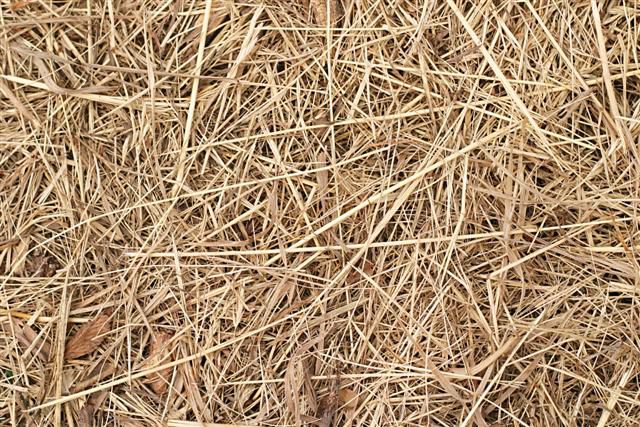

One of the options for fertilizing in the spring is a mixture of manure with straw
For tomatoes
Even a one-time application of chicken can increase the yield of this crop by increasing the size of the fruits. Like all members of the nightshade family, it responds well to this fertilizer. In the spring, one-time fertilizing is done with fertilizer (rotted droppings), laying it around the planting holes at the rate of 3-4 kg / m².
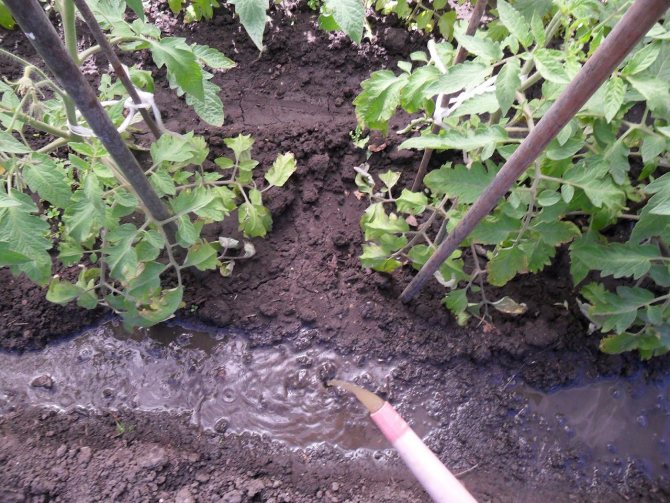

Watering tomato bushes
During the growing season, tomatoes are watered with manure tincture at the rate of 2-3 liters per bush. If the stems and leaves begin to grow excessively fat, the feeding is stopped.
For cucumbers
If there are a lot of barren flowers on the cucumber beds, the use of chicken manure infusion will help solve the problem. Cucumbers are watered with it in the spring until flowering at the rate of 3-4 l / m².
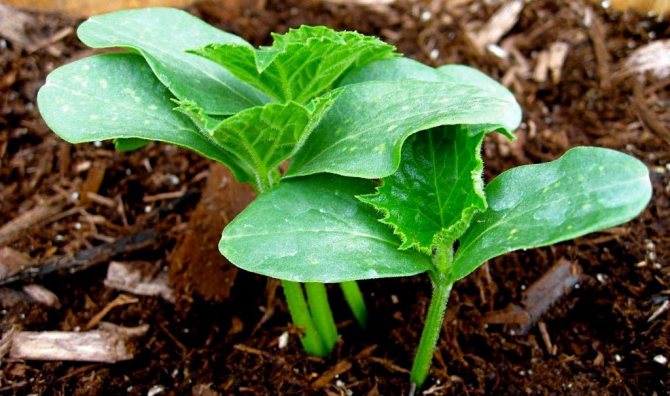

Cucumbers are fed before flowering
Cucumbers are sensitive to uric acids, so you need to take precautions:
- Leave the infusion or solid mixture in the open air for several hours before use.
- Avoid getting fertilizer on the roots.
After the beginning of flowering, feeding with droppings is not performed.
Video - Feeding cucumbers with fertilizer based on chicken manure
For potatoes
Chicken manure is also good for potatoes. It does not directly affect the increase in the number of tubers and their growth, only indirectly. First, by strengthening the bush and supplying it with the nutrients necessary to "build" root crops. Secondly, it increases the resistance of potatoes to fungal diseases and late blight. However, manure cannot fully provide this crop with all the necessary nutrients, therefore it is combined with other fertilizers. For example, 1 part of potassium chloride is added to 10 parts of humus.
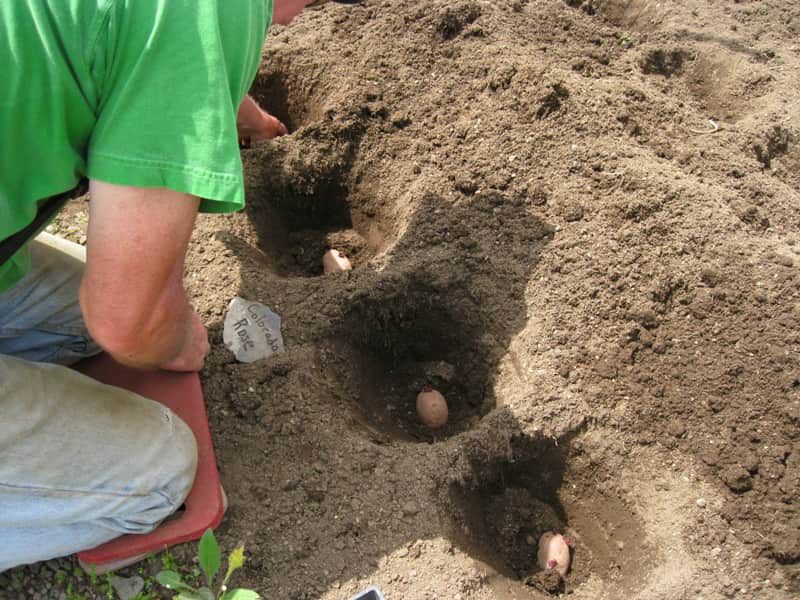

Manure application to the holes
It is best to add humus prepared in this way in the fall before digging at the rate of 50 kg per hundred square meters, or into the hole when planting. At the beginning of summer, young bushes that have reached a height of 15 cm, but not exceeding 20 cm, are fed with liquid droppings. This is done strictly once.


Fertilizing potatoes with ash
For fruit trees
Top dressing with tincture of droppings of fruit trees, especially apple and pear trees, has shown itself well. This is done 2 times a year, before flowering and after harvesting.
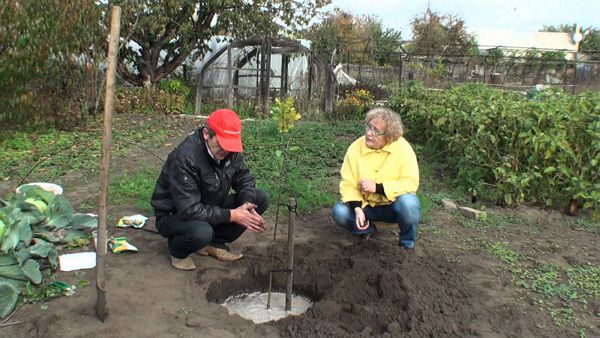

Fertilizing fruit trees
A wide, shallow groove is dug around the tree, coinciding with the projection of the crown. It is poured with tincture from the droppings at the rate of 8-10 liters per 1 square meter of the entire resulting circle. You can take a tincture prepared according to any of the recipes above.
For strawberries
This culture is fed with dung tincture in the spring, when young leaves began to appear. The bushes themselves are not watered. A wide and shallow furrow is made between the rows, into which the infusion is poured and sprinkled with earth. After the beginning of flowering, this cannot be done.
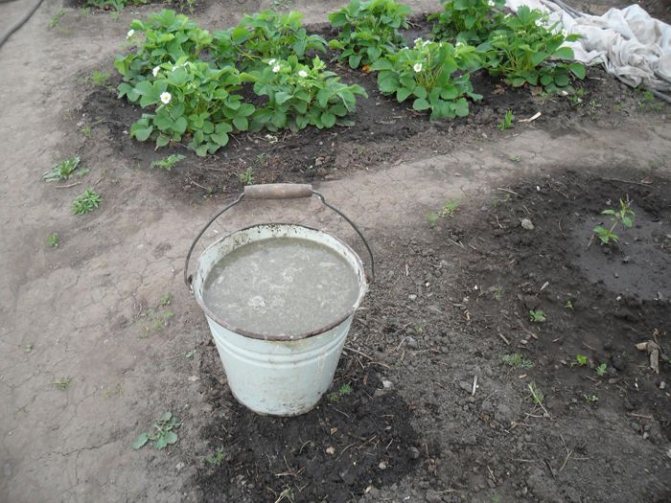

Strawberries are watered between the rows
A one-time watering at the beginning of the growing season is enough for the plant to receive a supply of nutrients necessary for the development of large and tasty berries.
If the strawberry bed is located on clay soils, it is permissible to lay the aisles with rotted droppings at the end of autumn.
List of birds whose excrement can be used as fertilizer
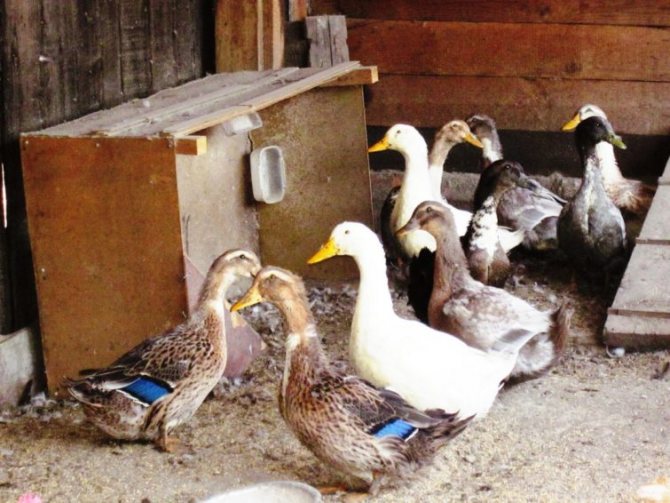

In addition to chicken manure, manure from other birds is also used as fertilizer:
- goose - rich in useful trace elements and minerals (potassium, calcium, oxides of magnesium, phosphorus, nitrogen, etc.), favorably affects the growth and development of plants.Due to the lower nitrogen content than in chicken manure, goose manure is softer and safer - it can be used for any garden and vegetable garden crops. Goose droppings are used both fresh and in the form of infusion and humus.
- quail - is considered the most valuable and nutritious of all types of poultry droppings. In composition, it is very similar to chicken - it is also rich in various trace elements and nitrogen; in addition, quail droppings contain some substances that prevent the development of pathogenic microorganisms in the soil. Quail manure significantly improves the fertile qualities of the soil, accelerates the ripening of root crops and increases the overall yield. Such droppings can be stored for a long time without losing their valuable nutritional properties. However, due to the high nitrogen content, as well as chicken manure, it should be applied carefully enough.
- pigeon - no less rich in composition, contains a large amount of copper, manganese, zinc, iron and nitrogen. It is more concentrated in nitrogen than other types of bird droppings, so it can only be used in a diluted form. In addition, only domestic, healthy pigeons can be used as fertilizer.
Precautions when preparing infusions


In order to avoid the negative effect of the chemical elements of manure on the human body and plants, you need to know how much to insist on chicken droppings, how to cook it correctly.
Chicken feces contain a large amount of helminths, ammonia, methane, so all manipulations with this product should be carried out in a protective suit and gloves.
The preparation of infusions should be carried out in a protective mask, because in chicken manure there are many pathogens that adversely affect human health.
It is necessary to use a small amount of infusion or in a weakly concentrated form for fertilizing, feeding plants. A large amount of minerals can burn, weaken the development of the plant.
The use of droppings in composting
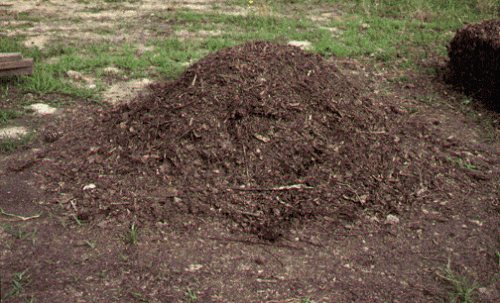

When composting, chicken manure can be used as an additional component or compost can be made directly from the manure with the addition of rotted sawdust or straw. To do this, lay out the ingredients in layers of about 20 cm, forming a compost pile with a height of 1.5 m. Cover the pile on top with foil. After two months, the manure and sawdust compost will be ready for use.
Cooking methods
You need to know how to breed bird droppings for feeding. Use requires strict adherence to all necessary conditions.
Gardeners use 3 effective options for preparing liquid top dressing at once.
Infusion
It is necessary to dilute fresh chicken afterbirth in a barrel of water. The resulting infusion from chicken droppings should look like unsaturated tea. It is important that the color is not too dark. If the mixture turns out to be darker, then water is added to it in order to reduce the concentration of nitrogen substances.
The resulting solution is infused for 2-4 days, then it is mixed with liquid (1: 2) and placed in the wells.
Using an already fermented placenta
You can breed chicken manure for plant nutrition at home. It is necessary to mix the slurry and water in equal amounts. The mixture is covered and left untouched for 5 days.
The result of fermentation is a concentrate to be diluted with water. Fertilizing with such a mixture costs 300-500 ml per bucket of water.
Dry fertilizer
Dry chicken manure requires a longer cooking time, but does not lose its positive properties and is excellent for spring and autumn fertilization of the soil after preliminary processing.
Using a compost pit is a very easy way.Plus, it's a great way to get rid of unnecessary organic waste, weeds and sawdust.
Rotted bird droppings, weeds, cut grass, sawdust, organic waste are poured into the compost pit from chicken manure. Adhere to a layer thickness of 15-20 cm. Humidity matters: if the components are dry, they are watered. The pit is closed and isolated from oxygen for 3-4 months.
Manure is scattered in the same layer over the land. Then it is dug up. During fall and winter, chicken excrement will release nutrients to the moist soil. By spring, the soil will be saturated with nitrogen and ready to plant.
Dry top dressing is poured under the roots of seedlings or fruit trees and bushes. At the bottom of the pit ready for planting, there should be an afterbirth, it is covered with a layer of soil, then the plants are planted.
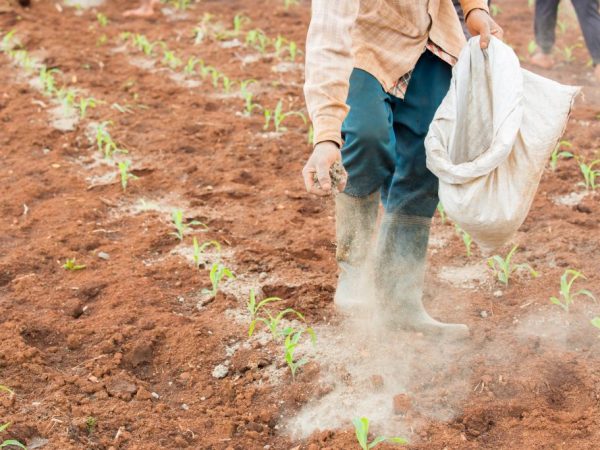

Dry droppings are poured under the roots of seedlings or fruit trees

